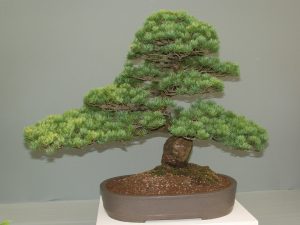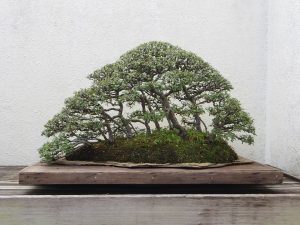This article will explain how to get started with growing your first bonsai tree. You’ll learn the basic steps to follow, as well as some of the recommended plants. Ready to learn what it takes to be a bonsai master? Then let’s begin.
Step 1 – Cultivation
The first step is to choose a bonsai that fits your requirements. Do you want to keep your tree indoors or outdoors? If you’d like it inside then this will limit your options to subtropical trees that can only survive indoors. When it comes to indoor bonsai there are certain varieties of bonsai that are easier to keep than others.
Ficus and jade are just two examples of indoor bonsai that are good for beginners as they are easier to care for and maintain. But remember that, like all plants, bonsai need plenty of light to grow well. Outdoor bonsai are easier to keep than indoor ones as outdoor bonsai are grown in the natural environment that trees normally grow in.

Step 2 – Styling
Next, you need to get started with shaping and styling your bonsai. You can style your bonsai with some basic pruning and wiring. Pruning is probably the single most important technique in bonsai.
Pruning keeps bonsai trees in shape and helps control their overall size. You should remove branches that have unnatural twists. So if two branches are at the same height, remove one and keep the other.
Most importantly, remove thick branches at the top of the tree.

Step 3 – Bonsai Care
Finally, one of the most crucial aspects of growing a bonsai tree successfully is how you care and maintain it. The first thing you need to consider is watering. You need to be careful how much you water a plant. Too much can result in root rot or at the very worst, death. Apart from watering, you also need to keep fertilization in mind. Fertilizing regularly is the key to keeping your bonsai healthy as the trees are in small pots, and have little space and nutrients available.
The first thing you need to consider is watering. You need to be careful how much you water a plant. Too much can result in root rot or at the very worst, death. Apart from watering, you also need to keep fertilization in mind.
Fertilizing regularly is the key to keeping your bonsai healthy as the trees are in small pots, and have little space and nutrients available.
Apart from watering, you also need to keep fertilization in mind. Fertilizing regularly is the key to keeping your bonsai healthy as the trees are in small pots, and have little space and nutrients available.
Some recommended beginner plants
-
Ficus bonsai tree
One of the easiest bonsai trees to care for and to maintain is the Ficus. They come in a variety of sizes and do not require a lot of light to do well. They are strong and can also grow very quickly.
-
Chinese elm bonsai tree
The Chinese Elm is one of the most common choices for indoor bonsai. They are easy to maintain due to their small leaves and they grow quickly.
-
Juniper bonsai
Juniper is another bonsai tree that’s easy to maintain as it is one of the traditional species of bonsai making it ideal for a beginner. Comes in small, medium, and large sizes.
In summary
Remember to bear in mind that a bonsai tree is a living work of art. Its shape is achieved with skillful manipulation and training. Purchasing a bonsai is just the beginning and in order to help keep the plant in peak condition, it will need to be carefully maintained and pruned.
There are many ways of starting to keep bonsai. The easiest way to start is to buy a plant from a specialist bonsai center. However, it’s well worth finding out a little about them before you make your purchase in order to get the best out of your bonsai.



